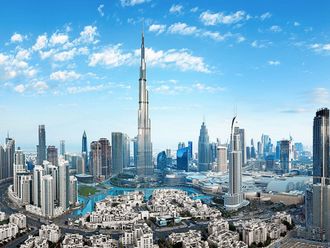Like Downtown New York City before the 2008 crash, the City of London’s identity is bound up with the financial services industry it serves. Not only in the type of occupiers its commercial real estate attracts but also in the atmosphere this creates at street level.
I believe that the City can secure its long-term performance and resilience from a real estate perspective, if it follows the lead of Downtown NYC in making the area more appealing to a more diverse demographic. You can already see some signs in isolated pockets like Broadgate and Legate Circus ... but to achieve this to scale requires a more coordinated approach on the part of its real estate stakeholders.
The reinvention of Downtown Manhattan
It was the financial crash of 2008 that was the catalyst for the reinvention of Downtown Manhattan. The economic fallout saw Downtown lose the market that drove its growth — financial services — almost overnight. While this was a huge blow for the area, it also allowed for a rethink of its identity.
Key stakeholders including Silverstein Properties, the Port Authority, and Brookfield Property Partners joined forces to form a business-led and business funded body (BID) and together they hatched a plan to open up Downtown and transform its image.
Tapping into Generation Y in Brooklyn
The BID noticed that the surrounding areas were experiencing a huge demographic shift, as Generation Y left South Midtown for the more keenly priced residential market across the water in Brooklyn. These cool young things typically worked in the tech firms of South Midtown and had to pass Downtown on their way to and from work.
So, they set about making the area more accessible to this key demographic, through infrastructure projects to improve road connectivity and cycle lanes and creating amenities that would coax them into the area in the evenings and weekends.
Stone Street: from rat run to alfresco hot spot
A small symbolic change can be enough to kick-start the 24X7 life of an area. Take Stone Street, one of Manhattan’s oldest roads just off Wall Street.
Today, its historic Dutch buildings are home to dozens of trendy bars and restaurants whose tables spill out on to the cobbled paving. It’s hard to believe that until a few years ago it was a dilapidated back alley and cut-through for the city’s traffic. So what changed?
A visionary Irish businessmen Danny McDonald and Greek immigrant Harry Poulakakos had the vision to fill the street with eating and drinking establishments while the pedestrianization of Stone Street transformed it into a buzzing and happening place, which started to draw people who didn’t work there into the area.
Stone Street also acted as a catalyst, as other developers started to take a different tact when choosing the type of amenity they were putting into their developments. Brookfield Place, originally known as the World Financial Center is now a high-end shopping centre and office-building complex, home to designer boutiques, top restaurants and a fancy food court.
Real estate lessons for the City of London
The City Corporation and owners also need to develop a coherent strategy to make the City as a whole more appealing to non-City types because it isn’t just about the building people work in anymore, but the area in which it sits. They need to do a better PR job of the City and change what it means to people who aren’t high-rolling financiers.
For instance, Broadgate City of London became Broadgate, a subtle but important change, and part of British Land and GIC’s strategy to transform it into an entertainment hot spot. As well as softening and opening up the public spaces around the circle itself, they were clever about the food and beverage retailers they sought.
And it paid off, with a Pizarro’s on the ground floor and Yautcha on the top one, Broadgate now draws a different crowd to the usual City one and has a life beyond the working week.
Opening up the City to new business sectors
When Amazon move into Principle Place, there will be up to 60,000 square feet of non-City folk, which translates to 6,000 people. As those developments in the area and just immediately north of the City happen, there will be percolation down and the change in the surrounding area will become apparent.
Bioscience offers another growth opportunity for the City. There’s a strong Biotech corridor coming down from Cambridge, sweeping down the north side of the City. Like tech, bioscience has a sizeable proportion of SME start-ups, which need incubation and flexibility.
The City could provide hire spaces and laboratories for projects, and become the equivalent of Silicon Roundabout for this emerging sector.
The City as a 24X7 destination
One of the great strengths of NYC and Paris is that people live in or near the centre. Old Battery Park, immediately below Brookfield Place is purely residential, and supports a 24X7 economy. While I understand why the Corporation hasn’t allowed residential developments up until now, it could zone an area for public rental sectors (PRS) and still keep the land under its ownership.
You only have to look a little further East to the residential development around Aldgate, which comes under Tower Hamlets, to see the vibrancy it’s created in what was the scruffier side of the city. The ground floor of the development is packed with fantastic amenities and food and beverage offerings.
So I say let residential encroach on to the City, make it more welcoming to bright young 20- and 30-somethings in Tottenham Hale, Hackney and Whitechapel. Build appeal into the City and it will create the resilience to withstand whatever the future holds.
The writer is Head of Central London Markets at JLL.












